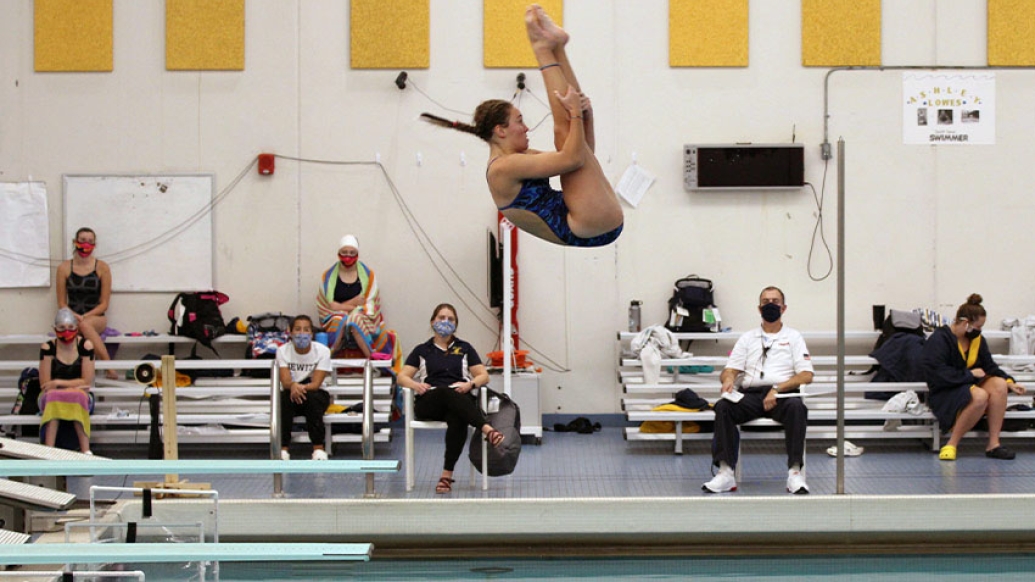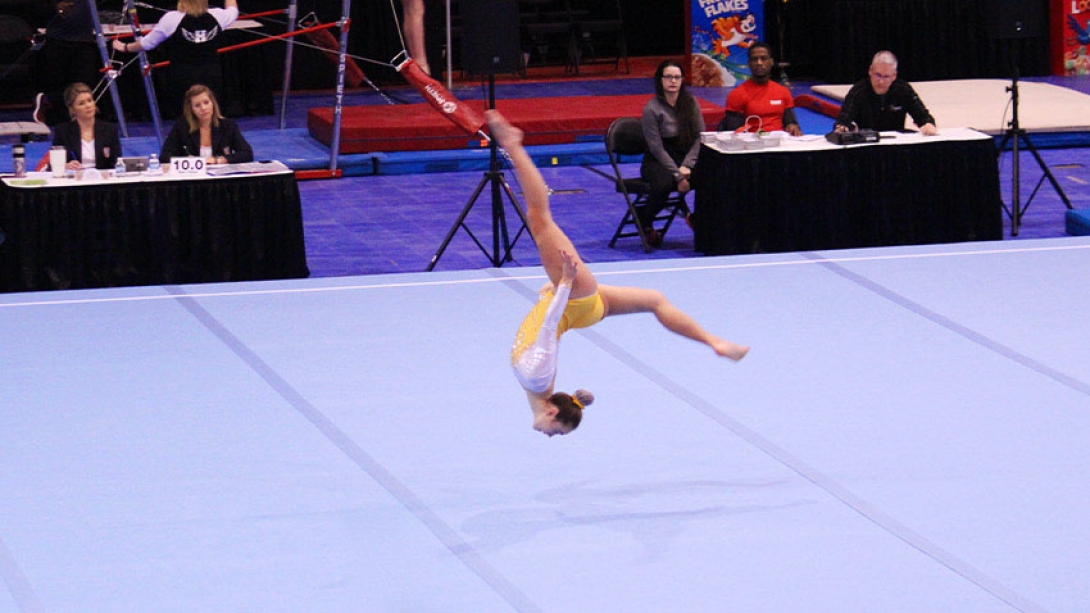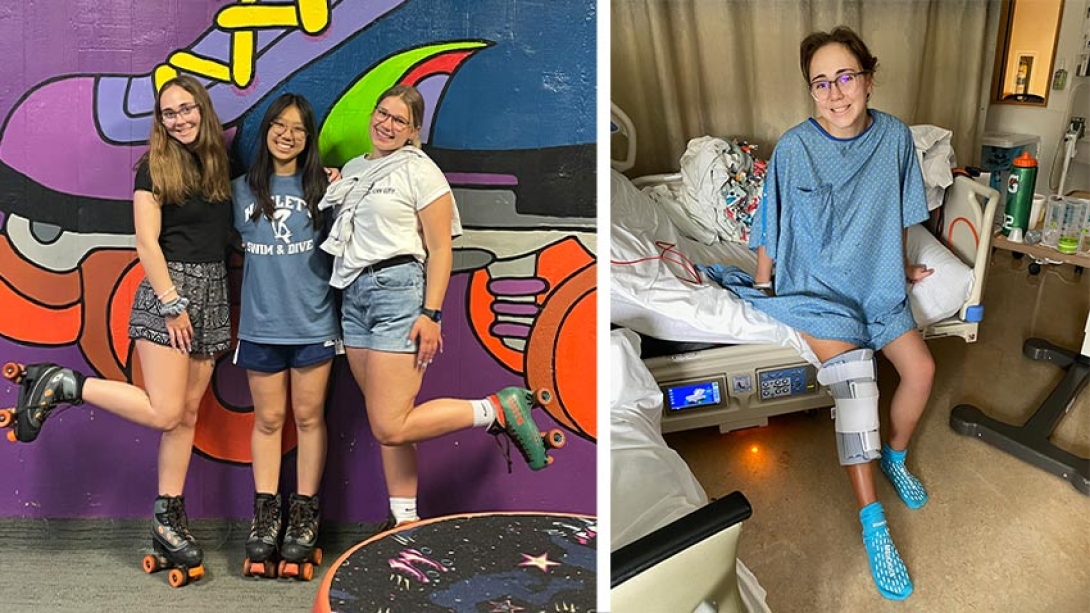After years spent searching for the cause of her leg pain, the now 16-year-old is on the mend.
5:00 AM
Author |

Kate McCloskey isn't embarrassed about the scars on the back of her legs. In fact, she said, "My friends think they look cool."
For the 16-year-old high school junior, the scars represent the pain she experienced throughout her early teen years until the right diagnosis — popliteal artery entrapment syndrome — was made at University of Michigan Health.
Popliteal artery entrapment syndrome, or PAES, is a rare vascular condition that affects the popliteal artery, the main source of blood supply to the leg below the knee. The artery becomes compressed by a muscle, tendon or band behind the knee, restricting blood flow to the lower leg and causing pain.
MORE FROM MICHIGAN: Sign up for our weekly newsletter
"The condition often goes undiagnosed because it can mimic other conditions such as knee joint pain or other muscle-related problems," said U-M Health vascular surgeon Katherine Gallagher, M.D. Gallagher specializes in diagnosing and treating patients with PAES and other causes of leg pain (unrelated to plaque buildup in the arteries) that often occur in athletes. "It's not uncommon for me to get people coming in saying they spent many years trying to figure out what's going on," said Gallagher. "We're usually able to figure out the diagnosis and get them on a treatment plan."
Although the condition can be something that has been present since birth due to developmental abnormalities that occur as the muscle/arteries are forming, said Gallagher, "we typically see these conditions start to present in high school or college-age patients who are engaged in sports. In particular, high-end competitive athletes can be more apt to develop significant symptoms — including severe pain in the lower legs and feet — that impair their ability to do their sport."
A budding athlete
As a gymnast from a young age, McCloskey was one of these athletes. But it would take many years and many doctor appointments to determine what was causing pain in both of her legs.
"I was about 12 years old when we started to look for the cause of my pain," she recalled. "I was a gymnast and the pain would get worse when I was practicing. It was a burning pain down the side of my calves, then pressure. My legs felt weak all the time."
I felt like no one else knew about this condition.Kate McCloskey
Because McCloskey's doctors, including sports medicine specialists and neurologists, attributed her pain to gymnastics, the East Lansing, Michigan, resident switched her focus to diving.
"I really got to the point where I couldn't handle the pain," she said. "So I had to give up gymnastics because that seemed like a sport that wasn't good for me due to the hard landings. I tried volleyball but decided on diving because I love to flip."
But the pain continued.
Finally, a diagnosis
"After seeing many doctors, one of them suggested it could be popliteal artery entrapment syndrome," said McCloskey, who was referred to U-M Health.
Appointments with sports medicine specialist Adam Lewno, D.O., and Gallagher in April 2021 led to a series of diagnostic tests, including an angiogram with intravascular ultrasound, which captures real-time images of blood flow while the leg and foot are maneuvered into various positions. This test, in addition to others, confirmed McCloskey's suspected PAES, the result of extra muscle bands restricting blood flow to her legs.
"I felt like no one else knew about this condition," said McCloskey, who underwent separate surgeries on each leg, performed by Gallagher and the team of PAES specialists.

"Our multidisciplinary team has extensive expertise in the diagnosis and treatment of popliteal artery entrapment syndrome and other syndromes not related to plaque buildup that tend to affect the younger, active population," said Gallagher, noting specialists that include vascular surgeons, orthopaedic surgeons, nurse practitioners, physical therapists and sports medicine physicians.
"The group reviews each patient's case and does a comprehensive workup to make sure we come up with the best plan. If a patient has a stress fracture, we have orthopaedic specialists, or for shin splints we have sports medicine doctors. All these specialties work together to help us come to the appropriate diagnosis as efficiently as possible."
Successful surgeries
Surgery on McCloskey's left leg was performed in April 2021, followed nine months later with surgery on her right leg.

"The procedure involves an S-shaped incision behind the knee," said Gallagher. "Using the angiogram and camera, we know exactly where the artery is getting compressed. We then isolate the popliteal artery and relieve the muscle, tendon or band causing compression."
McCloskey's six-week recovery from both surgeries included two days in the hospital, the use of a walker and finally crutches.
Today, as her fall diving season gets under way, McCloskey is happy to report: "My legs are so much better, and I have the scars to show for it."
Like Podcasts? Add the Michigan Medicine News Break on iTunes or anywhere you listen to podcasts.

Explore a variety of health care news & stories by visiting the Health Lab home page for more articles.

Department of Communication at Michigan Medicine
Want top health & research news weekly? Sign up for Health Lab’s newsletters today!





